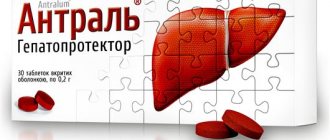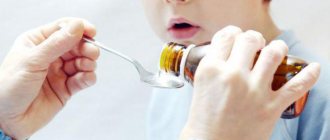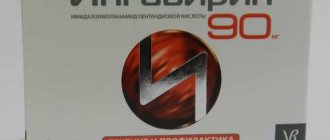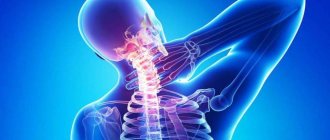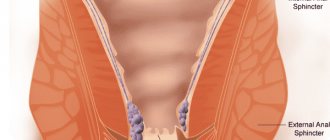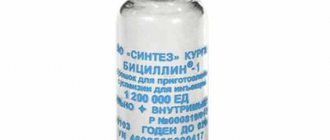Compound
active ingredient:
citrulline malate;
1 sachet contains citrulline malate 1 g;
Excipients:
natural orange sangria solution, concentrated sodium hydroxide solution, purified water.
Dosage form.
Oral solution.
Basic physical and chemical properties:
colorless or yellowish liquid with an orange odor.
Pharmacotherapeutic group.
Drugs that affect the digestive system and metabolic processes. Amino acids and their derivatives. Code ATX A16A A.
Instructions for use of Stimol
The dosage calculation should be carried out by the attending physician, taking into account the nature and degree of metabolic disorder, as well as the patient’s age. If you act according to the instructions, then the recommended doses for use are:
- Children over five years old. The maximum daily dose should not exceed 2 g, i.e. you can take no more than two sachets of powder per day.
- Adults. The maximum dose is 3 g or 3 ampoules (sachets) per day.
It is recommended to take the solution orally with meals. If powder is used, then it is necessary to dissolve the contents of the sachet in half a glass of plain or sweet water.
Typically, the shelf life of the drug is about three years at a temperature of 15 to 25 C. If the powder has already been diluted with water, then it should be drunk immediately. The same applies to ampoules - they are not stored open.
The course of treatment with an antiasthenic drug most often lasts from 10 to 12 days. If during this time the therapy has not brought the desired results, then, on the recommendation of a doctor, a second course may be prescribed, but only after several months (usually from one to three).
Cases of overdose with Stimol have not yet been identified, but side effects, most often manifested as discomfort in the epigastric region or allergic reactions, cannot be excluded.
It should be borne in mind that the sodium content in the solution precludes its use during salt-free diets. On the contrary, it is indicated for patients suffering from diabetes mellitus, because Stimol does not contain glucose.
Pharmacological properties
Pharmacodynamics.
Citrulline malate is an equimolecular mixture of malate and L-citrulline.
Malate stimulates the Krebs cycle and activates the mechanism of energy production at the cellular level, reduces lactate levels in the blood and tissues, prevents the development of lactic acidosis and increases ATP levels. Citrulline is one of the amino acids that is part of the urea cycle and activates the formation and excretion of urea from the body.
Pharmacokinetics.
Citrulline malate is quickly absorbed in the intestine. The maximum concentration is reached after 45 minutes, exceeding the initial concentration by 6-15 times, and returns to the original level after 5-6 hours.
Clinical characteristics.
STIMOL: to make life a joy
| It's morning again, I have to get up. A new working day begins with irritation: either your family needs something when you are in a hurry to get to work, then your boss demands the impossible, or your subordinates are dull mediocrities and lazy people. And my memory is bad, it seems like I had to call somewhere. How difficult it is to pull yourself together... Is this a familiar picture? Do your loved ones irritate you, every little thing makes you angry, you sleep poorly, your married life is not going well? This condition has a very specific name - asthenia . It is very common among those who experience constant stress at work. A new concept has even emerged: “manager syndrome.” Not only managers are susceptible to this illness; asthenia very often occurs after illness, even after a seemingly harmless cold such a condition can develop. What to do? Maybe I shouldn’t pay attention, relax, relax, meet friends? But rest does not bring relief either. And from corporate parties, friendly meetings, special events, at which you so often need to drink alcohol, there are so many unpleasant sensations in the morning. There is an exit! The drug STIMOL (citrulline malate) produced by Biocodex Laboratories (France) will help cope with both asthenia and the consequences of alcohol consumption. |
Very often, asthenic syndrome occurs in various diseases (infectious and somatic, hematological and oncological, endocrine and metabolic disorders) or can be psychogenic (as a rule, this is an independent disease). They also secrete reactive
asthenia is a syndrome that occurs in initially healthy individuals under the influence of various factors that cause maladaptation.
It is necessary to distinguish between asthenia and fatigue. Fatigue is a normal physiological
state of the body, which is a protective signal to stop activity. A person can, through an effort of will, overcome fatigue and continue work that needs to be completed in a short time. Then we are talking not only about excessive work, but also emotional volitional load. In some cases, insomnia begins, depriving the body of rest and strength. Sometimes there is a temptation to fight fatigue and insomnia with alcohol, but its toxic effect only aggravates the condition and, combined with excessive stress, leads to nervous exhaustion.
G. Beard, who was one of the first to describe asthenia, associated it with the rapid development of civilization, with the fact that the nervous system cannot withstand the modern pace of life. Nowadays the prevailing concept takes into account the influence of all etiological factors in the occurrence of this disease. Asthenia appears when the body's energy resources are threateningly depleted. This condition develops both in the case of a real threat (symptomatic asthenia), and in the case of an imaginary or imaginary threat (psychogenic asthenia). Thus, asthenia is an abnormal, spontaneous lethargy that occurs after minor exertion and lasts for a considerable time. It is pathological and requires treatment (Ciurana A. et al., 1997).
The range of manifestations of asthenia is quite wide. Complaints that can be attributed to this condition are observed in at least 1/3 of patients (Shahar E., Lederer J., 1991). Some scientists believe that similar symptoms occurred in approximately 60% of patients who consulted a doctor (Yudelson Ya.B. et al., 2003). As a result of nervous exhaustion, symptoms are formed, aptly assessed by G. Beard as “irritable weakness.” Asthenia is characterized by a whole complex of disorders (Korkina M.V. et al., 1995):
• vegetative
: with excitement or physical exertion, patients experience increased heart rate, sweating, cold extremities, disturbed sleep and appetite, and decreased libido. Headache is a signal of fatigue during mental stress of any kind;
• sensorimotor
: increased sensitivity to environmental factors and excessive attention to sensations from internal organs. Patients complain of temperature changes, intolerance to bright light, tinnitus, and more;
• emotional
: patients are unrestrained, irritable, upset to the point of tears over an insignificant reason;
• intellectual-mnestic
: complaints arise about difficulties in remembering and concentrating.
At the basis of almost all clinical manifestations of asthenia, metabolic disorders play an important role, namely, an increase in the level of ammonia and lactic acid with subsequent disruption of the processes of formation and use of energy. Normally, the most energetically favorable is the aerobic metabolism of glucose, which results in the formation of 38 ATP molecules (2 in anaerobic glycolysis and 36 in the Krebs cycle). The accumulation of ammonia inside the cell blocks this process. To obtain energy, the cell is forced to switch to ineffective anaerobic glycolysis, which results in the additional formation of lactic acid, which increases acidosis. In essence, lactate accumulation and acidosis lead to glycolysis and “paralysis” of energy processes.
Part of the ammonia is excreted by the kidneys, the other is used in amination reactions, but the main way of its neutralization is the synthesis of urea in hepatocytes. Carbon dioxide (CO2) is required for the synthesis of urea, but the amount of available CO2 is limited, since it is used in bicarbonates to compensate for metabolic acidosis caused by excess lactic acid. Therefore, any effect that reduces the formation of lactic acid contributes to more efficient removal of ammonia. Thus, stimulating the formation of urea helps to reduce the severity of asthenia associated with hyperammonemia (Ciurana A. et al., 1997).
Both the causes of asthenia and its clinical manifestations largely determine the treatment strategy. Disruption of normal metabolism is a mechanism for the development of asthenia at the cellular level. Therefore, to eliminate asthenia, it is necessary to correct biochemical disorders. The search for a new effective drug for the treatment of asthenia led to the creation of the drug STIMOL, which acts on cellular metabolism. The drug is a combination of L-citrulline and malate. The latter acts as a metabolic mediator that helps to “bypass” the ammonia block of the oxidative pathway for ATP production and limit the accumulation of lactic acid by reorienting it towards gluconeogenesis. Citrulline is an intermediate product of the urea formation cycle, helping to accelerate this cycle and enhance the excretion of ammonia.
STIMOL is a drug that effectively eliminates metabolic disorders in the body during asthenia. Due to this, it is widely used in clinical practice. Positive experience has been gained in the use of STIMOL in various conditions accompanied by asthenia: among liquidators of the consequences of the Chernobyl nuclear power plant accident, in the complex treatment of alcohol withdrawal and hangover syndrome, for correcting metabolism during therapeutic fasting, overcoming physical fatigue in athletes, eliminating astheno-metabolic disorders in children with nephrotic syndrome, in pregnant women, elderly and senile patients, in the process of recovery after infectious diseases, surgical interventions, long-term immobilization (Demina M.V. et al., 1999; Oknin V.Yu. et al., 1999 ; Fedorova V.I., 2000; Bendahan D., 2002; Nadezhdin A.V. et al., 2004). STIMOL does not cause mental or physical dependence. The low incidence of side effects and good tolerability of STIMOL allow the drug to be used in pregnant women, the elderly and children. Of particular interest is the use of STIMOL for alcohol withdrawal and hangover syndrome. There is a group of drugs that reduce the manifestations of certain consequences of alcoholic libations. However, these drugs do not always eliminate intoxication, since they often do not affect its pathophysiological mechanisms. STIMOL as a metabolic drug, effectively eliminating intoxication, relieves the manifestations of hangover syndrome: nausea, headache, tremor, etc. (Nadezhdin A.V. et al., 2004)
STIMOL is available in sachets containing 2 g of a 50% solution of citrulline malate with a pleasant orange flavor. It does not contain glucose, so it can also be used for asthenia in patients with diabetes. The drug is easy to use. It is recommended to consume it with meals 3 times a day, dissolving the contents of 1-2 sachets in water or a sweetened drink. The course of admission is 14 days. STIMOL will help defeat asthenia, whatever its cause. The drug will add energy that is lacking for work, love, and life. And it will also save you from hangovers. STIMOL - enough strength for everything! o
Oleg Mazurenko
Indications
Symptomatic treatment of functional asthenia:
- physical asthenia;
- mental asthenia;
- post-infectious asthenia;
- postoperative asthenia;
- asthenia in old age;
- asthenia in athletes;
- vegetative-vascular dystonia of the hypotonic type;
- alcohol withdrawal syndrome;
- sexual asthenia.
The drug is indicated for symptoms of asthenia: general weakness, emotional lability, chronic fatigue, low ability to work, drowsiness.
The drug is indicated for muscle pain and cramps that appear due to the accumulation of lactate after physical activity. The drug is recommended during the period of convalescence of diseases that lead to the development of asthenovegetative syndrome.
Analogs and cost in pharmacies
The average cost of the antiasthenic drug Stimol in Moscow pharmacies is about 600 Russian rubles for 18 sachets of powder per package.
If necessary, you can purchase cheaper analogues of Stimol, among which it is worth highlighting Eleutherococcus extract, tincture of ginseng and lemongrass seeds, Vigor, as well as Ladasten and Phenotropil tablets.
